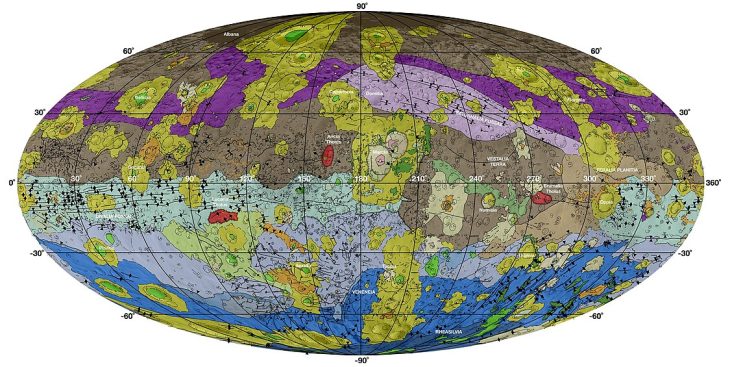
Word of the Day: Kaleidoscope
Today’s word of the day, courtesy of Word Guru, is kaleidoscope. Pronounced / kəˈlaɪ dəˌskoʊp /, the noun refers to “an optical instrument in which bits of glass, held loosely at the end of a rotating tube, are shown in continually changing symmetrical forms by reflection in two or more mirrors set at angles to each other” or “a continually changing pattern of shapes and colors” or “a continually shifting pattern, scene, or the like” (https://www.dictionary.com/browse/kaleidoscope). You may notice that the fourth syllable receives a secondary stress, and the vowel in that syllable is actually a diphthong.
The word entered the English language in “1817, literally ‘observer of beautiful forms,’ coined by its inventor, Scottish scientist David Brewster (1781-1868), from Greek kalos ‘beautiful, beauteous’ (see Callisto) + eidos ‘shape’ (see -oid) + -scope, on model of telescope, etc. They sold by the thousands in the few years after their invention, but Brewster failed to secure a patent” (https://www.etymonline.com/search?q=kaleidoscope). Sir David Brewster was an inventor particularly in the area of optics. “He invented an improved stereoscope, which he called ‘lenticular stereoscope’ and which became the first portable 3D-viewing device. He also invented the stereoscopic camera, two types of polarimeters, the polyzonal lens, the lighthouse illuminator, and the kaleidoscope” (https://en.wikipedia.org/wiki/David_Brewster). Frankly, while those other inventions may be more important in the history of optics and of photography, the only one I have ever heard of is the kaleidoscope.
The meaning of the word has been broadened: “Figurative meaning ‘constantly changing pattern’ is first attested 1819 in Lord Byron, whose publisher had sent him one of the toys. As a verb, from 1891. A kaleidophone (1827) was invented by English inventor Charles Wheatstone (1802-1875) to make sound waves visible” (https://www.etymonline.com/search?q=kaleidoscope). The popularity of the kaleidoscope is manifest in the short amount of time between the coining of the word by Brewster in 1817 and the recording of its broadening just two years later.
On this date in 2011, according to On This Day, “NASA’s Dawn space probe enters orbit around the protoplanet Vesta” (https://www.onthisday.com/events/july/16).
Dawn was a space probe launched in 2007, after a lot of political back and forth, with the asteroid belt as its destination. Its goal was first the protoplanet Vesta and then the dwarf planet Ceres. “In the fulfillment of that mission—the ninth in NASA’s Discovery Program—Dawn entered orbit around Vesta on July 16, 2011, and completed a 14-month survey mission before leaving for Ceres in late 2012. It entered orbit around Ceres on March 6, 2015. In 2017, NASA announced that the planned nine-year mission would be extended until the probe’s hydrazine fuel supply was depleted. On November 1, 2018, NASA announced that Dawn had depleted its hydrazine, and the mission was ended. The derelict probe remains in a stable orbit around Ceres” (https://en.wikipedia.org/wiki/Dawn_(spacecraft)).
Vesta is estimated to be the second largest body in the asteroid belt, after the dwarf planet Ceres. “It constitutes an estimated 9% of the mass of the asteroid belt. Vesta is the only known remaining rocky protoplanet of the kind that formed the terrestrial planets. Numerous fragments of Vesta were ejected by collisions one and two billion years ago that left two enormous craters occupying much of Vesta’s southern hemisphere. Debris from these events has fallen to Earth as howardite–eucrite–diogenite (HED) meteorites, which have been a rich source of information about Vesta” (https://en.wikipedia.org/wiki/4_Vesta).
It’s the brightest of the asteroids, even visible with the naked eye from the Earth at times. “Vesta’s surface area is about the same as the land area of Pakistan, Venezuela, Tanzania, or Nigeria” (ibid.). And it’s not exactly a sphere: “Vesta’s shape is close to a gravitationally relaxed oblate spheroid,[ but the large concavity and protrusion at the southern pole (see ‘Surface features’ below) combined with a mass less than 5×1020 kg precluded Vesta from automatically being considered a dwarf planet under International Astronomical Union (IAU) Resolution XXVI 5” (ibid.). “Before the arrival of the Dawn spacecraft, some Vestan surface features had already been resolved using the Hubble Space Telescope and ground-based telescopes (e.g., the Keck Observatory). The arrival of Dawn in July 2011 revealed the complex surface of Vesta in detail” (ibid.).
It is interesting that it was so well observed with telescopes. It would probably not have been observed at all with a kaleidoscope. Then again, today’s image is almost kaleidoscopic:
Geologic map of Vesta (Mollweide projection). The most ancient and heavily cratered regions are brown; areas modified by the Veneneia and Rheasilvia impacts are purple (the Saturnalia Fossae Formation, in the north) and light cyan (the Divalia Fossae Formation, equatorial), respectively; the Rheasilvia impact basin interior (in the south) is dark blue, and neighboring areas of Rheasilvia ejecta (including an area within Veneneia) are light purple-blue; areas modified by more recent impacts or mass wasting are yellow/orange or green, respectively (ibid.).